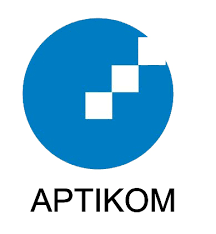The Implementation of Clustering Method With K-Means Algorithm In Grouping Data of Students’ Course Scores at Universitas Muhammadiyah Yogyakarta
DOI:
https://doi.org/10.18196/eist.v1i3.13172Keywords:
Data mining, clustering, K-means, WEKAAbstract
Student grades can be a reference. A large number of student grade data in a university causes data accumulation; thus, data are grouped with data mining. This study aims to classify student grade data in the second semester. Grouping student grade data was performed using the clustering method with the K-means algorithm. The research data were derived from the database of Universitas Muhammadiyah Yogyakarta. The data were students’ grades in the academic years of 2010/2011, 2011/2012, 2012/2013, 2013/2014, and 2014/2015. The analysis process was carried out using WEKA software, SQL Server 2014 Management Studio and Microsoft Excel. The clustering method could be applied to group student grade data. Clustering with K-means formed three clusters, with cluster 0 comprising 72 students, cluster 1 consisting of 190 students, and cluster 2 totaling 133 students. A cluster with the lowest average score could be used as a consideration in updating the learning methods to optimize students’ score acquisition.
References
G. W. Dekker, M. Pechenizkiy, and J. M. Vleeshouwers, “Predicting Students Drop Out: A Case Study.,” International Working Group on Educational Data Mining, 2009.
S. Defiyanti, “Analisis dan Prediksi Kinerja Mahasiswa Menggunakan Teknik Data Mining,” Syntax: Jurnal Informatika, vol. 2, no. 01, 2013.
M. Ridwan and H. Suyono, “Penerapan Data Mining Untuk Evaluasi Kinerja Akademik Mahasiswa Menggunakan Algoritma Naive Bayes Classifier,” vol. 7, no. 1, p. 6, 2013.
R. Z. Alberto, W. K. Sari, and A. Primanita, “PENGELOMPOKKAN PERFORMA AKADEMIK MAHASISWA BERDASARKAN INDEKS PRESTASI MENGGUNAKAN K-MEANS CLUSTERING,” KNTIA, vol. 4, 2017.
A. Asroni and R. Adrian, “Penerapan metode K-means untuk clustering mahasiswa berdasarkan nilai akademik dengan Weka Interface studi kasus pada jurusan Teknik Informatika UMM Magelang,” Semesta Teknika, vol. 18, no. 1, pp. 76–82, 2015.
J. García-Tobar, “Study of Indoor Radon Using Data Mining Models Based on OLAP Cubes,” Physical Science International Journal, pp. 53–61, 2020.
J. Hunker, A. A. Scheidler, and M. Rabe, “A systematic classification of database solutions for data mining to support tasks in supply chains,” 2020, pp. 395–425.
F. Meskine and S. Nait-Bahloul, “A support architecture to MDA contribution for data mining,” International Journal of Data Mining, Modelling and Management, vol. 12, no. 2, pp. 207–236, 2020.
C. Vercellis, Business intelligence: data mining and optimization for decision making. Wiley Online Library, 2009.
U. M. Fayyad, G. Piatetsky-Shapiro, and P. Smyth, “Knowledge Discovery and Data Mining: Towards a Unifying Framework.,” 1996, vol. 96, pp. 82–88.



